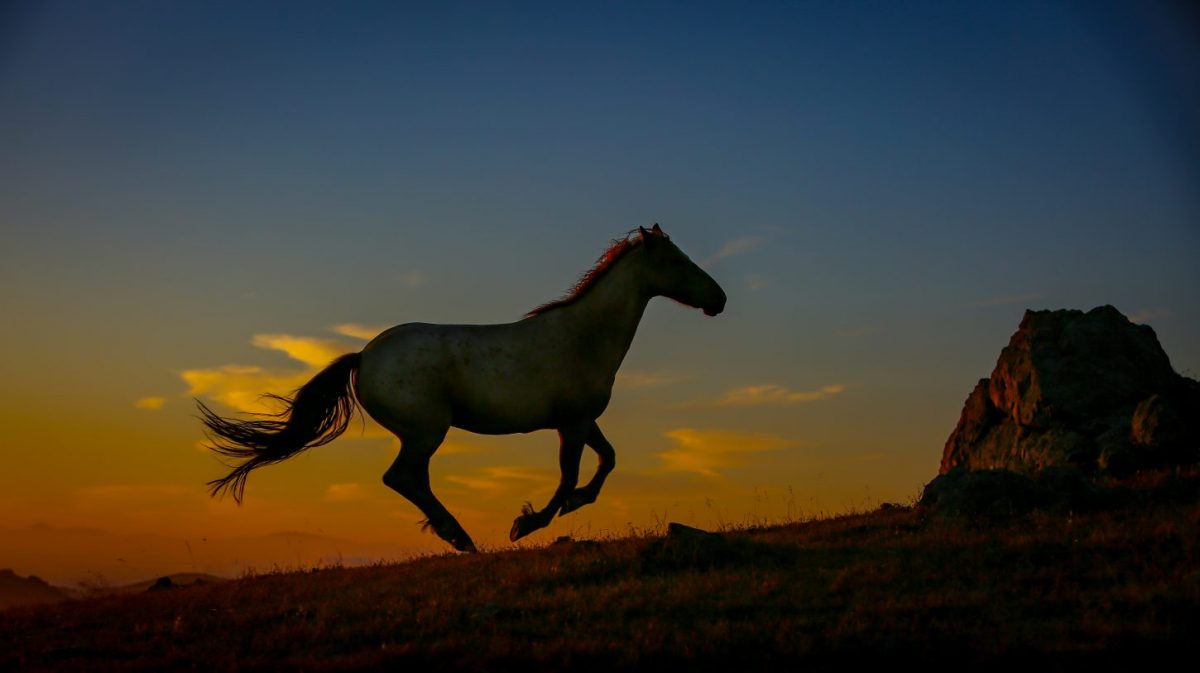In the lingering battle over wild horse management in the West, horse numbers are advancing far faster than stakeholders’ ability to regulate them. With approximately 88,000 wild horses and burros currently roaming Bureau of Land Management (BLM) acres, and another 45,000 or so in BLM holding facilities, the agency has struggled to manage the natural growth of these herds.
“Horse herds can grow by 15 to 20 percent per year, which means they’re doubling in size every four or five years,” says Jason Lutterman, public affairs specialist with BLM, the agency tasked with managing the Wild Horse and Burro Program.
Despite the animal’s current growth, the history of the wild horse is one of ebbs and flows.
Around the mid-17th century, as many as 2 million wild horses and burros may have roamed the land west of the Mississippi River, turned out on the landscape or escaped from pens. As more and more people — lured by gold, land or the thrill of adventure — began flooding the West, these animals increasingly competed with livestock for resources and were often either shot by ranchers, captured for human use or rounded up for slaughter. By the mid-1900s, the number of wild and free-roaming horses and burros was estimated at 25,000. Yet it would be a couple more decades before they would receive the safeguards necessary to end this culling.
In 1971, Congress passed the Wild Free-Roaming Horses and Burros Act granting these animals protection from capture, branding, harassment or death. Deemed “living symbols of the historic and pioneer spirit of the West” by the act itself, wild horses and burros have become inseparable from the idea they represent.
“A lot of these animals are descendants from the animals that built the West, so it’s understandable that they would inspire that awe in people.”
“A lot of these animals are descendants from the animals that built the West,” says Lutterman, “so it’s understandable that they would inspire that awe in people.”
According to Lutterman, some of today’s wild horses and burros are descended from those used by some of the nation’s first western settlers, and many burros specifically were used in mining operations. “Some of them in Nevada and other places are descendants from the cavalry remounts that used to travel the Pony Express and other places [out] West,” Lutterman adds. “A lot of our herds have some really interesting history.”
The question over whether or not wild horses are native to the U.S. has also been a point of contention in the debate over their management. According to Suzanne Roy, executive director of the American Wild Horse Campaign (AWHC), the common classification of these horses as non-native is not scientifically correct.
During the time of the Bering Land Bridge, horses lived and roamed North America, coming and going as they pleased, she says. “Then, about 10,000 years ago, the horses went over to Asia, and they didn’t come back until the Spanish brought them back as a domesticated horse,” explains Roy. “To paleontologists, the fact that the horse came back from domesticated stock is biologically no different than the panther that went extinct here around the same time, went to South America and came back on its own; they’re both reintroduced, native North American wildlife species.”
All of this — the horse’s history, symbolism and non-native status — has contributed to the emotionally charged dispute over how they should be managed. Wild horses have become a lightning rod in the debate over public lands in the West and who and what should have access to them. But according to Celeste Carlisle, biologist and science program manager with the wild horse sanctuary Return to Freedom, the situation is far more complicated than that.
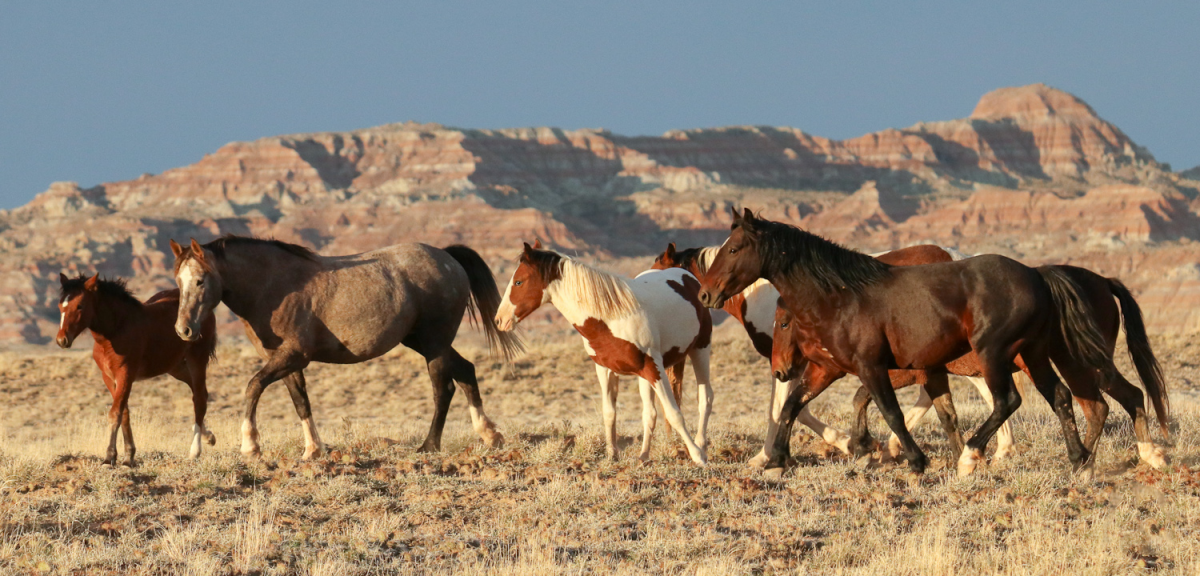
“We have a drying Western environment with more and more precious resources [but less] availability of those resources. We have sort of this fight over public lands and what they should be used for and can be used for and whether the states should control them or the feds should control them,” she notes. “Then, sort of over the top of that we have wild horses and cattle as big players in the fight over what is fair or OK or justifiable out on those public lands.”
As natural resources diminish and wild horse and burro populations grow, the need to effectively manage the herds has become increasingly critical — but also more difficult. The animals themselves take a large toll on the environments in which they live and roam, which has a ripple effect on other species — both plants and animals.
“When wild horses and burros exceed their appropriate management level, they can have impacts on public lands just through overgrazing of the resources out there, which of course invites in invasive species, invasive weeds. That has its own set of impacts on public lands,” says Lutterman. “We do see [effects on] wildlife populations and their habitat as well, and of course, the wild horses themselves suffer when they’re at overpopulation.”
Per the 1971 act, the BLM is required to manage for natural ecological balance on the public lands it manages, which it attempts to do by looking at a variety of data to determine the productivity of the land in order to establish an appropriate management level (AML). According to Lutterman, AMLs are set at the herd management area (HMA) level; this is the name for the places on public lands where wild horses and burros are managed and allowed to roam. The process of establishing AMLs is public, allowing for input every step of the way, Lutterman says.
“When horses are at an appropriate management level, they do well to coexist in their environment in a balanced way with the other species that are out there.”
“They look at monitoring data for vegetation growth and resources that are out there available to animals to consume over a five- to seven-year period and take that into consideration,” he explains. “They also have to figure out what other animals are out there, what other uses of the land are going on, take [that] into consideration and make sure there’s enough food and water for horses, even during drought periods, during summer, during winter.”
The BLM’s collective AML (for all HMAs) is approximately 27,000 animals on a total of 27 million acres of BLM-managed land — effectively, one horse for every 1,000 acres. When their numbers exceed this, impacts on other species increase and the animals may begin to migrate in search of food. At their current size, the herds are increasingly crossing roads in search of food and new habitat, leading to more altercations with motorists — especially in Arizona, where the number of collisions involving burros has skyrocketed in recent years.
“When horses are at an appropriate management level, they do well to coexist in their environment in a balanced way with the other species that are out there,” Lutterman says. “Just like wildlife populations are managed and livestock grazing is managed, that’s what we try to do with wild horses and burros as well.”
Management Methods
Over the years, the BLM has focused management efforts on gathering, removing and adopting out animals, which remains its primary method of removing excess horses and burros. In the 1990s and early 2000s, Lutterman says they were adopting out upwards of 8,000 animals a year. “Recently, our numbers have bottomed out, in about 2014, at about 2,000 animals a year,” he says. However, the BLM is seeing success with a new adoption incentive program, which pays individuals $1,000 to adopt an animal. This has led to renewed interest in adoptions, with nearly 7,000 in fiscal year 2019.
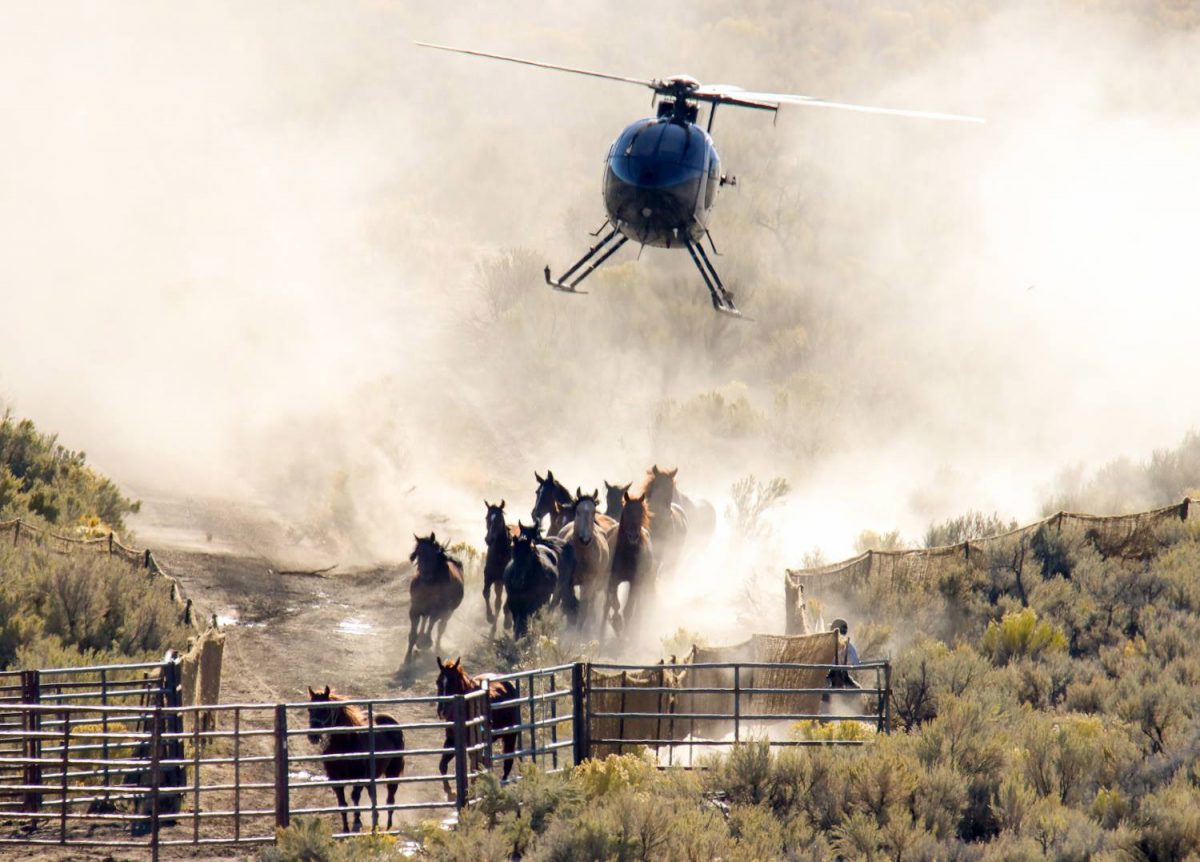
Regardless, many of the horses gathered from BLM-managed lands — those that don’t get adopted — are placed in long-term holding facilities, or off-range pastures, where they live out the rest of their lives at a reported $46,000 cost to taxpayers.
Advocacy groups like AWHC are critical of the BLM’s gather-and-removal approach, which they say actually leads to higher rates of reproduction.
“They have a system right now that basically continues to pull horses off the range and houses [them] for substantial cost, and it doesn’t actually allow for control of horses on the range because, every year, the horse numbers continue to go up,” says Greg Hendricks, director of field operations for the AWHC. “When you take populations and you remove large numbers of horses from them, it actually promotes reproduction and the horses reproduce at a higher rate.”
Hendricks began his career with the BLM in 1978, working for the Carson City District for seven years. And while he acknowledges the need to manage the wild horse and burro population, he believes the BLM’s focus has been too narrow.
“Back then, we would round up 4,000 horses to reduce the population control element, and we would adopt out 4,000 horses — the demand was there — but BLM has stayed with that philosophy throughout the years,” Hendricks says. “They’ve spent very little time and effort doing fertility control, which is really the weakness in their program.”
PZP is the name of the fertility control used most often on wild horses and burros as it has proven to be the most effective, as well as the easiest to administer. When injected into the muscle of a mare, which is done using a dart in an air rifle, PZP causes her immune system to produce antibodies that attach to the sperm receptor to prevent fertilization.
“In terms of reducing overpopulation, gathering and removing the animals is really the only way to do that.”
One study in Maryland suggested that PZP reduces the likelihood of conception to less than 10 percent. The vaccine has been used to regulate other wild species such as white-tailed deer, elk and black bears with varying levels of success, according to a 2018 report.
“Initially there’s a primer and a follow-up dose within a couple of weeks for a booster, and then yearly, it’s boosted to maintain its efficacy for a period of time,” says Greg.
According to Hendricks, the BLM administered just 702 fertility control treatments to horses in 2018, which he believes is one reason the agency is losing ground. Lutterman says there’s a reason the agency has not put more time and energy into this method.
“The PZP … seems to work well to control population growth, sort of minimize the amount of animals that are born each year on the range,” he notes. “In terms of reducing overpopulation, though, gathering and removing the animals is really the only way to do that.”
The BLM has seen a lot of success using PZP in smaller herds closer to population centers, where the animals are more comfortable with humans, Lutterman says. Farther out on the range is another story.
“These animals that are closer to population centers tend to be a little bit more friendly towards people and allow them to get close enough to dart them,” he says. “That’s not the case in most of our herds where the animals will see you coming a mile away and all you see is a dust cloud.”

This means each HMA would have to gather and remove horses every year or so to administer the vaccine. Such an approach, Lutterman cautions, would be hard on the animals, not to mention expensive.
“The success of each tool is really dependent on the herd,” he says. “Each herd management area is unique … and will respond to different management actions in different ways. So, we use birth control where it can be effective and then we gather animals where it can be effective.”
But the AWHC isn’t buying it.
“The BLM has a tendency to say, ‘No, we can’t do it because the horses are all over the place, they’re in remote areas,’ but you have to remember that everything needs water; sooner or later, they’ll come to you,” says Hendricks. “What we find is that wild horses are actually more accessible than the BLM gives them credit for.”
As an example, he cites a recent effort by the AWHC. The organization conducted applications of the vaccine in the Virginia Range, an area just shy of 285,000 acres — 80,000 of which are public lands. “It’s an area just adjacent to Reno and Carson City and bordered by highway 80 and highway 50, and we have successfully treated over 650 mares and just under 1,000 treatments within that area,” Hendricks says.
“It’s really showing that a large wild horse population and a large habitat area can be managed humanely if you just … think creatively and put some resources into it.”
“Our darters have darted more horses in less than six months in the Virginia Range than the entire BLM did in fiscal year 2018. So it shows that where there’s a will, there’s a way,” he adds. “It’s really showing that a large wild horse population and a large habitat area can be managed humanely if you just … think creatively and put some resources into it.”
Lutterman notes that, since 2015, the BLM has invested approximately $11 million into trying to develop better fertility control vaccines that last longer. One in particular, which is still being tested and evaluated, is showing promising results, with the potential to last up to four or five years. Other methods of management being considered by the BLM are skewing the sex ratio on the HMAs so that herds are 60 percent male and a spaying program in which stallions would be gathered, undergo surgery and then be re-released — an extremely controversial proposal.
“We don’t have a whole lot of tools available to us, but we are focusing on the ones that we have and trying to make the best use of them,” says Lutterman.
Appropriate Management Level
Much of the criticism of the BLM’s management of wild horses and burros stems from the AML, whether it’s accurate or fair. For Roy, 27,000 is an uncomfortably familiar number.
“The number of horses the BLM deems to be appropriate is the number at which the population was so threatened that Congress acted to protect them,” she says.
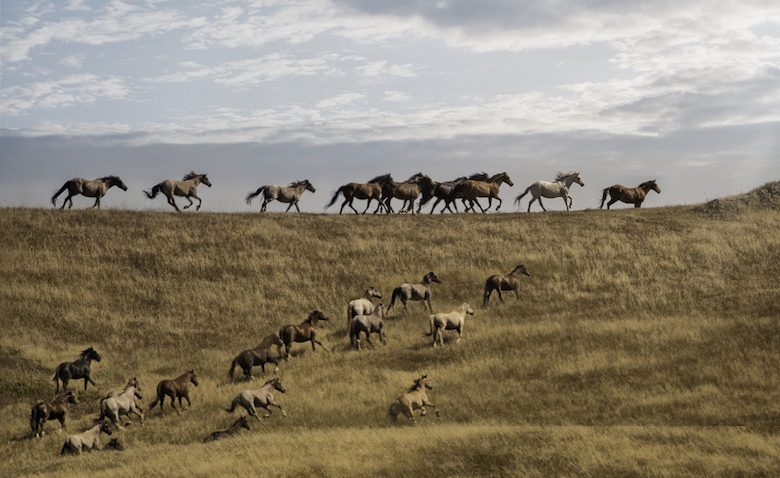
The AWHC — which playfully refers to the BLM as the “Bureau of Livestock Management” — believes the solution to wild horse and burro management lies in re-evaluating the AML to give these animals a fair share.
“The BLM manages 245 million acres of public land in the West. Livestock grazing occurs on 155 million of those acres, and of that 155 million acres that’s grazed by livestock, only 27 million is shared with wild horses. So the horses have a very small piece of the public land pie,” Roy says. “But even on that small piece of land, the way the BLM allocates resources, 80 percent of the forage is allocated to commercial livestock, so horses get 20 percent or less, and those low-population limits are based on that forage allocation.”
Lutterman acknowledges the BLM’s “multiple-use mandate,” meaning that the agency has to provide space for livestock grazers, recreationists and wildlife on the public land it manages. However, he says it’s important to note that wild horses can only legally reside on the public lands on which they were found when Congress passed the 1971 act.
“The BLM doesn’t have the authority to move wild horses from a place where they’re managed now to a place where they weren’t managed or where they weren’t found when that act was passed,” Lutterman says. “So there is a lot more land out there available for livestock grazing.”
He notes that while the ratio of livestock to horses on the HMAs may appear to be off balance to the uninformed observer, there is a reason for this.
“Horses are really a special species on public lands, especially when compared to livestock, because [they] are out there 24/7, and we have to make sure that the size of the herd we manage for is the size that can be supported by the land, even in the dead of summer or the dead of winter when resources are scarce.”
“Horses are really a special species out on public lands, especially when compared to livestock, because the wild horses are out there 24/7, and we have to make sure that the size of the herd we manage for is the size that can be supported by the land, even in the dead of summer or the dead of winter when resources are extremely scarce,” Lutterman says. “We don’t want to be managing the population size where we have big die-offs every time summer or winter rolls around.”
Carlisle, who is also a member of the BLM’s Wild Horse and Burro Advisory Board, which provides management recommendations to the agency, agrees that limits should be set on the number of animals that can inhabit public lands. However, she notes that the AMLs need to be more fluid to take into consideration changes that occur.
“Ecologically speaking, all land and areas have a carrying capacity, and that’s the number of animals that are going to be able to live on that land sustainably and without creating a lot of damage. That number is going to change based on a lot of things: habitat type, the animals that are there, the density of the animals, how much they’re moving around, … what other animals and plants are in that area, what the climate is like in that area, if the climate is changing, all sorts of things,” she says. “But what happens when we come up with these hard and fast numbers is that’s not the real world. Conditions change, and they change frequently.”
According to Lutterman, the individual HMAs, not the BLM at large, are responsible for adjusting their AMLs, which he says they do as needed. “Each plan is sort of on its own timeline for when it needs to be renewed, and when that happens, then of course the BLM will look at what the condition of the land is and what we believe the land can support in terms of wild horse and burro numbers. That does happen every once in a while. Our herd management level will change, go up or down,” Lutterman says, adding that there was recently a proposal to increase the AML for a herd in Wyoming.
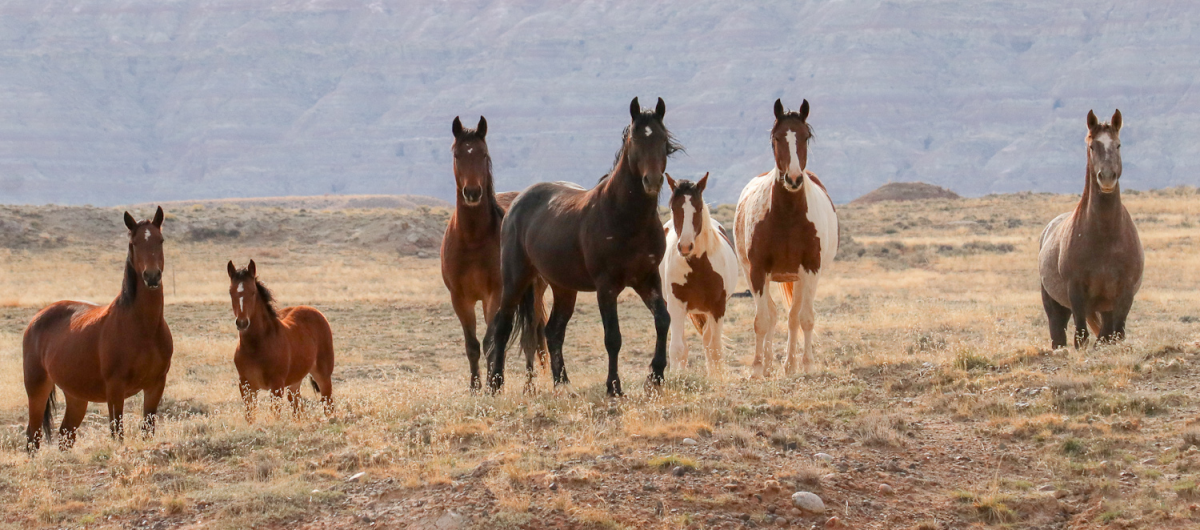
Carlisle may believe the BLM’s mode of determining the AML is outdated and inconsistent or that there’s an “unevenness” to how the agency determines what is allowed on public lands and to what extent, but she also recognizes the BLM’s need to manage these lands for multiple uses.
“Those uses, whether you like it or not, are mostly extractive: livestock for production and mining and logging,” Carlisle says. “That’s the mandate of these multi-use public lands. … I think some of the bad feelings or ill will comes from this layer of the discussion.”
This animosity — the result of so many voices and interests and an inability to agree — has led to a debate wrought with misunderstandings, skepticism and distrust.
Carlisle likens the situation to trying to fit a round peg in a square hole.
“With this issue in particular [it] really seems like there are some very hard lines drawn in the sand with groups from every direction, be they wildlife, conservation or wild horse advocacy researchers or agencies. They’re not willing to compromise on A, B or C, and that has really stifled dialogue for a very long time,” she says. “Therein lies the controversy right there is that none of these groups are probably ever going to agree about what is exactly equal.”
Yet if any progress is to be made, there will have to be some give on all sides. “It’s going to take everyone who’s involved making some compromise, not just one user group or another,” Carlisle says.
“There were tentative meetings out West with these very unlikely diverse stakeholders in the same room learning how to speak together respectfully and really listen to each other.”
Perhaps the one thing these groups — which include wild horse advocacy organizations and cattle and ranching industry groups — can agree on is the fact that there’s a need for improvement when it comes to the management of wild horses and burros. For the longest time, the idea of these constituencies coming together to work toward mutual progress was inconceivable.
That was, until several years ago.
Led by the Humane Society of the United States, organizations including (but not limited to) Return to Freedom, American Mustang Foundation, National Cattlemen’s Beef Association, American Society for the Prevention of Cruelty to Animals and American Farm Bureau Federation joined forces to work toward a common goal: to develop an effective, financially sustainable solution to managing wild horse populations on public lands.
For its part, Carlisle says, Return to Freedom realized that in order to work toward any solution, it would have to be open to others’ perspectives. “That was sort of the impetus behind being involved and being able to have our voice at the table — understanding that that means having a respectful voice and listening to a lot of things that maybe we don’t like … and that we don’t like to think about, but, heck, that’s the real world, so we’d better get involved,” she says.
Initially, representatives from participating organizations came together to hash out their differences. “There were tentative meetings out West with these very unlikely diverse stakeholders in the same room learning how to speak together respectfully and really listen to each other,” says Carlisle.
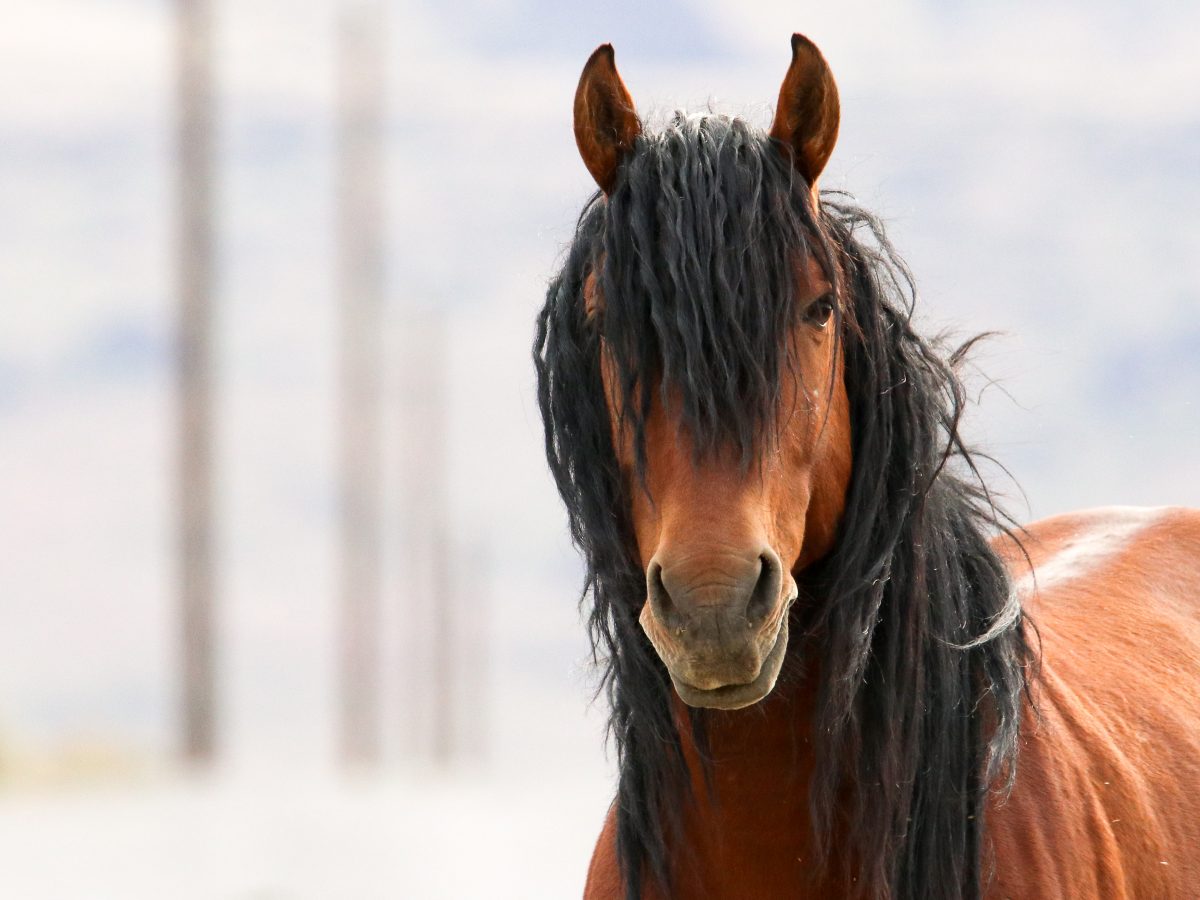
What they ended up coming up with is the result of years of research and investigation, data analysis, discussion and compromise, which is a proposal referred to as The Path Forward.
“That was a lot of late nights with spreadsheets and ecologists and economists, plugging through a lot of numbers and looking at a lot of historical data and peer-reviewed journal data, and talking to the agency about what numbers they use in their data analysis,” Carlisle says.
The resulting proposal, which the group presented to Congress for consideration in fall 2019, is comprised of four tiers, which Carlisle says must be executed simultaneously in order to truly have an impact. These include prioritizing gathers and removals in areas lacking sustainable resources, scaling up fertility control, implementing better partnerships with private landowners to provide more natural habitat and increasing the number of adoptions.
“We were very conservative in our modeling,” says Carlisle. “The type of fertility control that we used, we modeled it using PZP, which … does need to be applied every year. We modeled it with not a huge number of adoptions that the agency would scale up to. We modeled it with not entire populations being given fertility control to just show that, even by scaling things up, you were going to be more efficient economically and numbers-wise than you would be if we just [stuck with] sort of business as usual.”
Coming to the Table
The idea of advocacy groups working together with livestock industry representatives has certainly not gone without a few ruffled feathers. The AWHC, specifically, has voiced its disapproval of the plan — one reason being its focus on gathers and removals.
“Basically, the plan calls for removing 15,000 to 20,000 horses from the range for the first three years and then 5,000 to 10,000 horses from the range every year after that for the remaining years of the 10-year plan,” says Roy. “That would be 130,000 horses at the maximum; that’s basically every horse and burro that exists today on public lands, plus 45,000 more that will be born that will be rounded up by helicopters and removed to holding facilities.”
“Because the agencies and because these different individual groups on all sides have not had good relationships and have not had good trust — and often for good reason — there is of course great fear surrounding any change.”
According to The Path Forward, however, in order to get closer to the established AML, removals need to be higher initially so that fertility control can catch up with the population. “In other words,” the plan reads, “to implement fertility control alone or alongside current average removal numbers would not achieve population balance and control because the number of foals born per year would still exceed the number of horses removed.”
“The whole point of front-loading your gathers, so you’re gathering larger numbers in the first number of years of a 10-year plan, is that you then get to drop the number of horses that you’re gathering and removing,” Carlisle notes. “Between years five and six, you’re gathering and removing only those numbers of horses that can be adopted.”
Concerns also swirl about the BLM’s ability under the plan to surgically sterilize wild mares using what opponents describe as an invasive and risky procedure. In addition to animal welfare concerns, Roy says she is worried such a move would mean “the end of wild, free-roaming horses as we know them.”
“When you do these sterilization procedures, … you interfere with their production of reproductive hormones that drive their natural behaviors,” she says. “So essentially, you’re taking the wild out of wild horses by destroying their natural behaviors, which will destroy their social organization. It will turn them into glorified pasture horses.”
However, Carlisle says sterilization is not a management tool they advocate for. While a search of The Path Forward document reveals one mention of the word “sterilization,” it is not included as part of a recommendation.
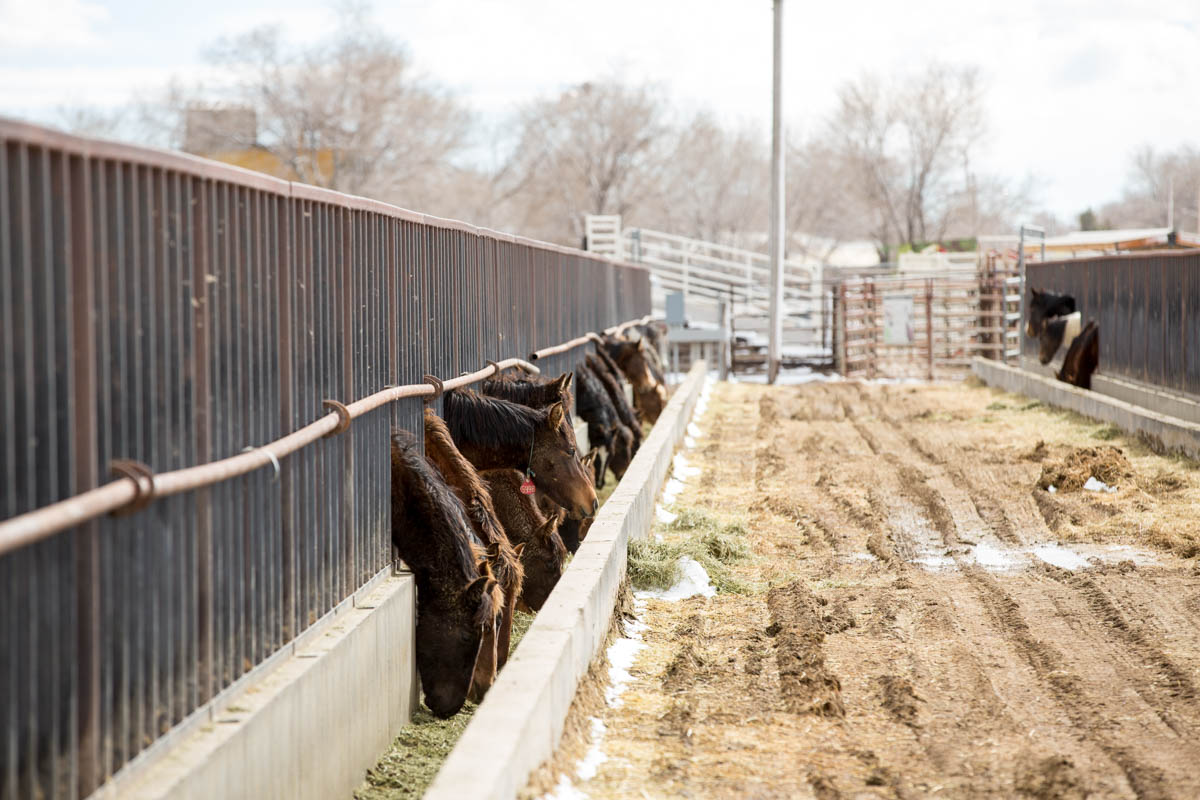
“Because the agencies and because these different individual groups on all sides have not had good relationships and have not had good trust — and often for good reason — there is of course great fear surrounding any change,” says Carlisle.
She admits that implementing the plan and ensuring the BLM follows it will not be easy, nor will it be cheap. If A Path Forward and its $50 million price tag (on top of the Wild Horse and Burro Program’s approximately $81 million budget) are approved by Congress, BLM would be responsible for implementing it. This has many advocacy groups worried.
“There is deep concern — and this comes from every direction — [about whether] the agency [will] be able to actually do this. They have not proven themselves incredibly effective in the past, so why would anything be different?” Carlisle says. “We hear the concerns from these groups that are angry and frustrated with this process — we have them, too. But I think it’s more important to have them and to be deeply involved and invested in this process.”
She is quick to point out that the coalition’s work didn’t end once it submitted its proposal to Congress. Ensuring progress will require ongoing “checks and balances,” Carlisle says.
“The whole thing is messy and uncomfortable, but the more alignment you can get with these diverse stakeholder groups, the more of a united front you can be to present to these agencies and to present to Congress and say, ‘Hey, we’re watching.’” she says. “We absolutely, deeply understand how this could work. We also understand where it could fail. We’re going to be there, right there, watching and overseeing and demanding that Congress oversee this process as well. That’s kind of all we can do. We have to keep at it.”

